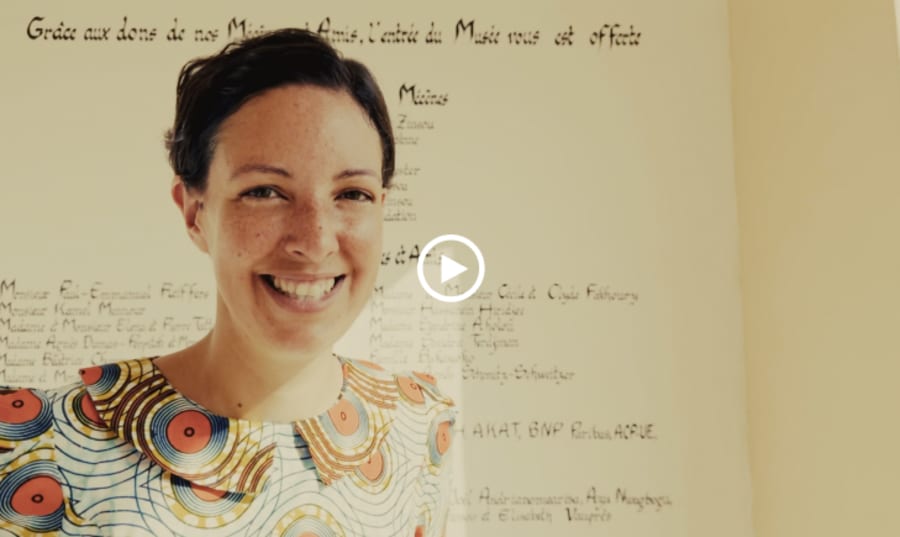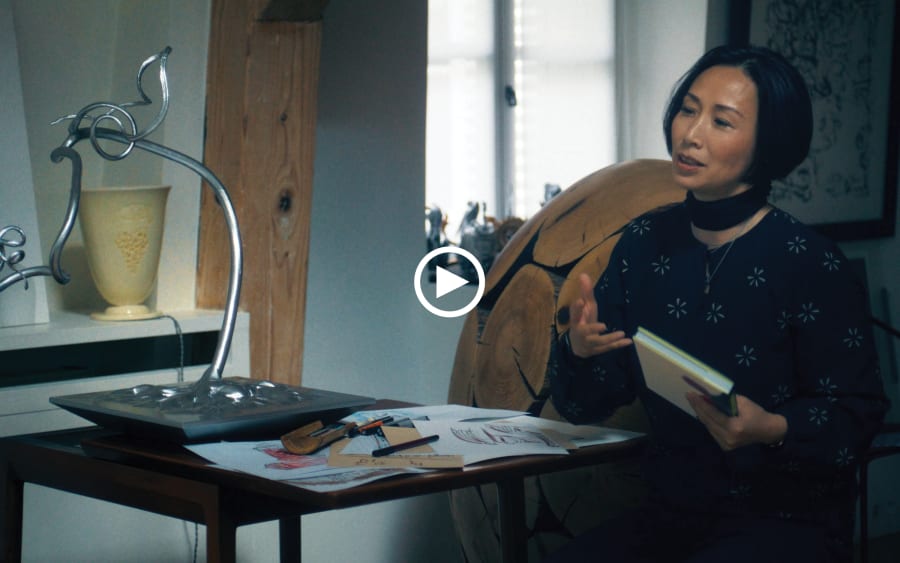Patrick Steffen: I’d like to start by charting your Art Basel journey. In 2022, you pulled off the extraordinary feat of staging the first edition of the fair in Paris in just eight months. What’s your most powerful memory from that year?
Clément Delépine: The intoxicating feeling of being part of a whole chorus. It was thrilling to experience not just the enthusiastic sense of anticipation, but also the real support we had. At the end of the fair, I was both exhausted and very excited, immensely happy and already nostalgic. Looking back, I understand more acutely the level of trust, solidarity, and madness we needed to succeed.
Do you still have this sense of audacity in 2024, just a few weeks before the opening of the third edition?
The sense of audacity is still there because, ultimately, it’s still early days. This year, we’ve completely reinvented the fair. The configuration has changed considerably, with a new name, Art Basel Paris; a new venue, the Grand Palais; and a growing number of galleries. So there’s lots that’s new for us. But among all these changes, one thing remains constant: our team. I’m very proud of that fact.
The renaming to Art Basel Paris represents a significant change.
The name Paris+ par Art Basel initially allowed us to take some liberties and experiment a bit. Today, the Art Basel brand is also a badge of excellence, and it is important for galleries to show they belong. We didn’t want to abandon the fair’s experimental dimension, but we nonetheless wanted it to be perceived as an Art Basel fair. Therefore, we started a conversation with our partners at the City of Paris and the Ministry of Culture. The Art Basel brand is powerful, and it can serve the city far better if it is fully embraced.
The 2024 edition of Art Basel Paris will be the first fair at the iconic Grand Palais, open to the public after major renovations.
Staging Art Basel at the Grand Palais is truly exciting. There may not be a more beautiful place in the world to hold a Modern and contemporary art fair. It is a real privilege. The thoughtful renovation of the building has resulted in a venue which is better suited to public events – a larger, more comfortable space. We will pay particular attention to the hospitality areas, starting with the Collectors Lounge, in order to meet the standards expected of an event of Art Basel’s stature. This year, we will host 195 galleries from 42 countries and territories, including 64 with spaces in France. Since 2023, we’ve added 40 galleries to the lineup, including Goodman Gallery, Kiang Malingue, Labor, Standard, Landau Fine Art, and Yares Art. We have also created a new sector called Premise, which brings together nine galleries with atypical curatorial projects, such as Bombon, Galerie Dina Vierny, and The Pill.
The 2024 Public program differs significantly from previous editions. Can you tell us more about that?
This year, we sought to offer the galleries more freedom by avoiding a rigid narrative framework. So, we redesigned the structure of our Public program. The Palais d’Iéna will present the special project ‘Tales & Tellers’, conceived by the artist Goshka Macuga and convened by Elvira Dyangani Ose, the director of MACBA [Museum of Contemporary Art] in Barcelona. This extraordinary project is made possible by Miu Miu, founded in 1993 by Miuccia Prada, which will be the Public Program Official Partner this year.
The Petit Palais will host a project by Jesse Darling, presented by Arcadia Missa, Chapter NY, Molitor, and Sultana, as well as the talks component of the public program, the Conversations, conceived this year by Pierre-Alexandre Mateos and Charles Teyssou, which celebrates avant-gardes. We were keen to facilitate exchanges between the Grand Palais and the Petit Palais by pedestrianizing Avenue Winston Churchill, where works by Yayoi Kusama (presented by David Zwirner), John Chamberlain (Mnuchin Gallery), and a house by Jean Prouvé (Galerie Patrick Seguin), will be displayed.
A new partnership with the Centre des Monuments Nationaux will unfold across three sites: the courtyard of the Hôtel de la Marine, where White Cube will present a work by the Greek artist Takis; a series of works in the Domaine National du Palais-Royal; and an exhibition of major works by the late British sculptor Lynn Chadwick at the Hôtel de Sully, presented by Perrotin and curated by Matthieu Poirier.
We are also continuing our collaboration with our previous partners: the Chapelle des Petits-Augustins at Beaux-Arts de Paris will host work by the sculptor Jean-Charles de Quillacq (presented by Marcelle Alix), while the Musée National Eugène-Delacroix will have an exhibition by Ali Cherri (presented by Almine Rech), and nearby, in the courtyard of the Institut de France, Galerie Mitterrand will present a sculpture by Niki de Saint Phalle.
In 2022 and 2023, younger galleries were placed at the physical center of the fair. Will the Emergence sector, dedicated to emerging galleries and artists, have a special location this year, at the Grand Palais?
At the Grand Palais Éphémère, we deliberately chose to position the emerging galleries sector at the physical heart of the fair, with the goal of really highlighting them. One of the key innovations in the renovation of the Grand Palais is the reopening of the walkways, creating a continuous path along the balconies. We saw the opportunity of maintaining the central position of Emergence by putting the galleries up there, so they are visible from the entrance to the fair. This location offers a panoramic view, creating a compelling dynamic, and allowing the sector optimum visibility.
We’ve observed a real flow of emerging galleries being integrated into the main sector, including Emalin, LC Queisser, Marfa’ Projects, and sans titre.
Yes, it’s remarkable. At Art Basel, we are committed to supporting the development of galleries. The selection committee is determined to support the most vulnerable structures that take significant risks. We are increasing the number of galleries in the Emergence sector from 14 to 16, and while previously they each had 20 m², now they have 30 m². So in the end, the position of these galleries within the overall balance of the fair is strengthened.
Another major highlight is the new Premise sector, unprecedented within the Art Basel family, which is dedicated to the presentation of artworks created before 1900. Could you explain how it came about?
It seemed necessary to me to create, within the fair, a space for curatorial freedom that responds to this old trope within art history: sometimes the exhibition itself is a work of art. Numerous galleries operate in this way, in Paris and beyond, and we wanted to offer them a platform to stage interesting, precise, and thematic presentations that might not necessarily find their place in the other sectors of the fair. I wanted to invite visitors to pause for a moment, and discover strong, original projects and take the time to listen to the stories these galleries tell us.
Do you consider that the presence of Art Basel in Paris since 2022 has stimulated the French market?
The art market is anchored in reality. In a context of global uncertainty, the French market still holds its fourth place within the world. This is primarily thanks to the ongoing work of French galleries, across all sectors of the market, that have built this scene. Additionally, a number of major international galleries continue to look for spaces in Paris, and those who find them generally choose to open in real style. Their programs demonstrate the seriousness of their approach, and they show artists and present works rarely seen here. I believe there is real confidence in the French market. It’s worth noting that 50% of art transactions in the European Union take place in France – that is significant – and it reflects the resilience and dynamism of the market.
Among your main goals, there has always been a desire to reach a very wide audience. Do you feel you’re succeeding in that?
Yes. It’s something that matters a lot to me. The fair is not a museum, but I believe it still has an institutional responsibility. Making art accessible to everyone, for free, is an institutional challenge. We are committed to reaching audiences beyond the glass roof of the Grand Palais and facilitating a dialogue about art that goes beyond the fair.
Art Basel Paris will take place from October 18 until October 20, 2024. Learn more here.
Patrick Steffen is Senior Editor, France at Art Basel. He is based in Paris.
English translation: Art Basel.
Caption for header image: Clément Delépine in front of the Grand Palais, Paris, 2024. Photograph by Matthieu Croizier for Art Basel.


